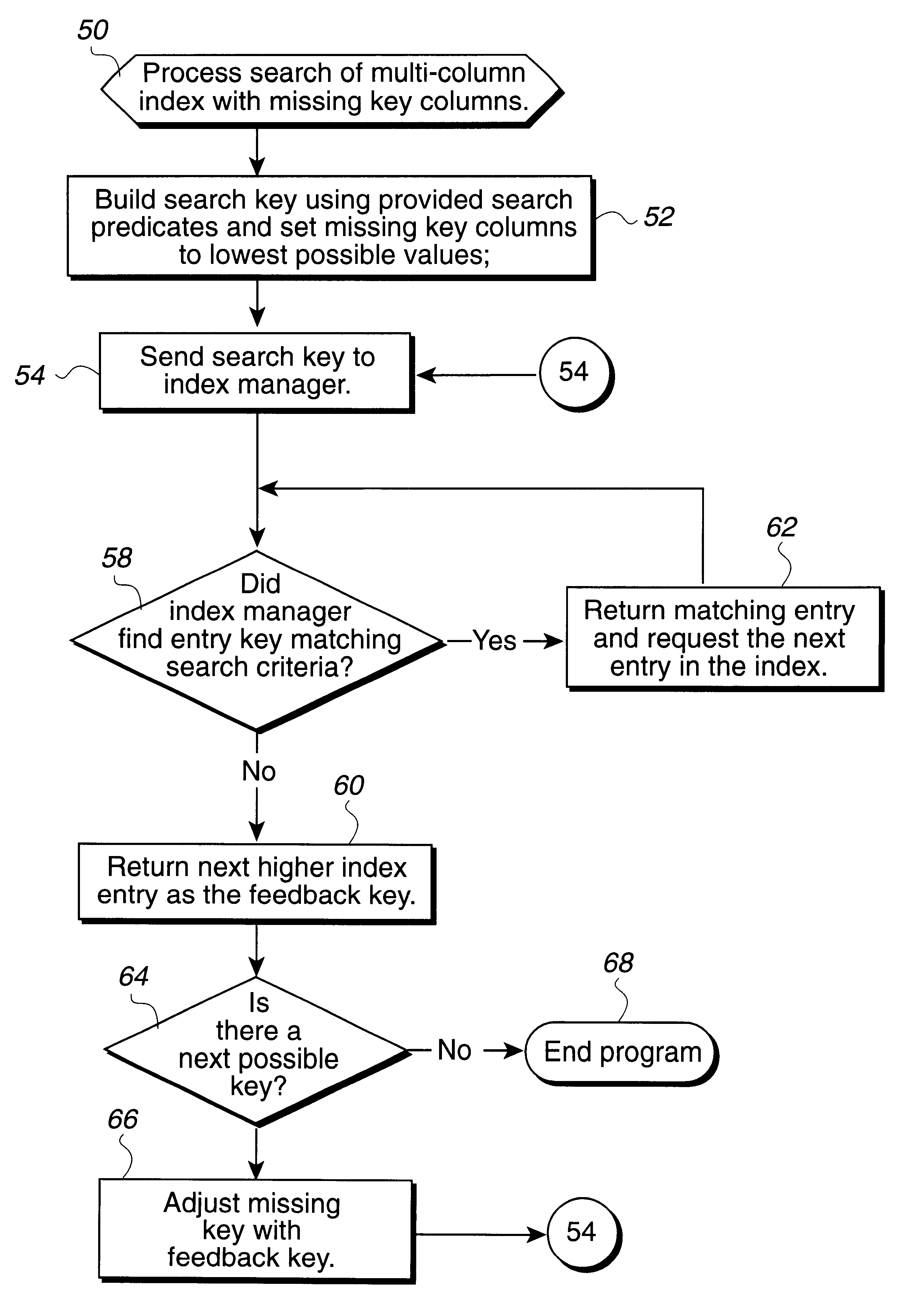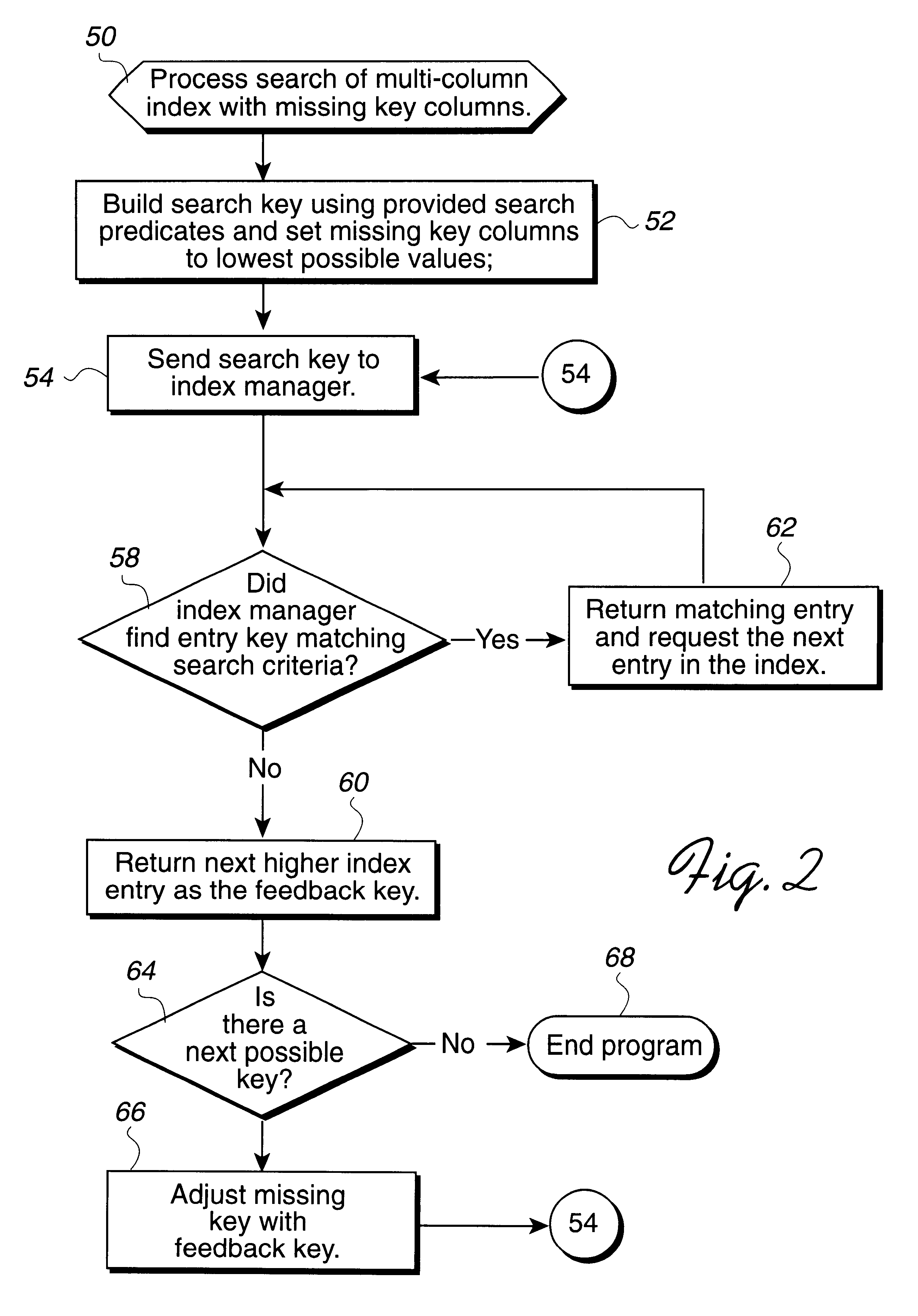Method, system, and program for searching a list of entries when search criteria is provided for less than all of the fields in an entry
a search criteria and entry technology, applied in the field of methods, system and program for searching a list of entries, can solve problems such as unnecessary search of the actual tabl
- Summary
- Abstract
- Description
- Claims
- Application Information
AI Technical Summary
Benefits of technology
Problems solved by technology
Method used
Image
Examples
Embodiment Construction
To overcome the limitations in the prior art described above, preferred embodiments disclose a system, method, and program for searching an ordered list of entries. Each entry is comprised of multiple fields. Each field may include one of a range of possible values for that field. If search criteria is provided for less than all of the fields, then multiple search keys will be generated such that each generated search key includes a search value for each field. The search value for each field for which there are no provided search criteria comprises one of the possible values for that field. A search operation is executed for each of the generated search keys to determine entries in the list that include field values that match the search values in the search key.
In further embodiments, the list of entries may comprise a database index having rows of index entries and a column for each field. In such case, an index entry includes values for each column in the index and information a...
PUM
 Login to View More
Login to View More Abstract
Description
Claims
Application Information
 Login to View More
Login to View More - R&D
- Intellectual Property
- Life Sciences
- Materials
- Tech Scout
- Unparalleled Data Quality
- Higher Quality Content
- 60% Fewer Hallucinations
Browse by: Latest US Patents, China's latest patents, Technical Efficacy Thesaurus, Application Domain, Technology Topic, Popular Technical Reports.
© 2025 PatSnap. All rights reserved.Legal|Privacy policy|Modern Slavery Act Transparency Statement|Sitemap|About US| Contact US: help@patsnap.com



